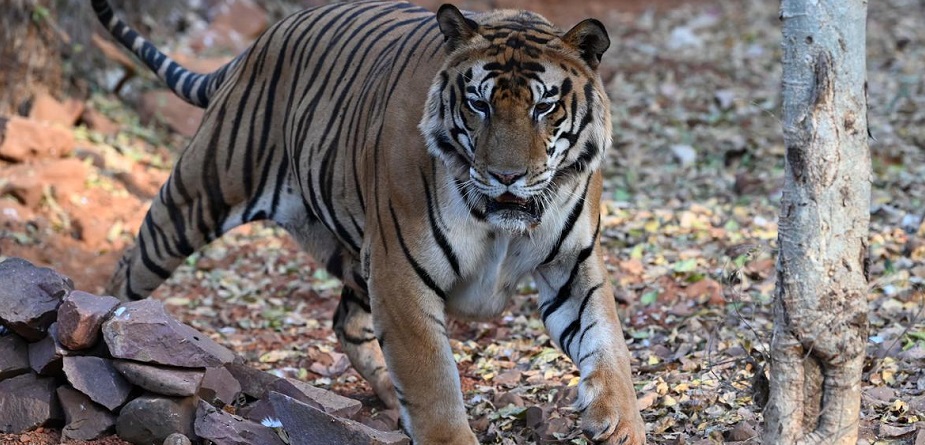Gateway to nature is the trending craze these days while planning a holiday. Browsing through the never-ending list we feel lucky to choose among so many nature-oriented spots in India. One such instance is Bandhavgarh National Park, loaded with forests, rivers, meadows, flora and fauna, and most importantly, the Royal Bengal Tigers.
Going down the history lane to know about Bandhavgarh from the origin.
The Bandhavgarh National Park is located on the lap of the Vindhyan and Satpura ranges, in the Umaria district of Madhya Pradesh. The national park is the habitat of mixed forest containing tropical moist, deciduous forests with sal and grasslands, along with rich wilderness. Bandhavgarh is significantly famous for its historical prominence and legends' existence, besides its biodiversity.
Being the best area for spotting tigers, the national park used to be the ‘Shikargah’, meaning a hunting reserve for the Rewa Maharajas and their royal guests.
In 1968, the park with 105 sq km was recognised as the National Park under suggestion of Maharaja Martand Singh of Rewa. After this designation, initiatives were undertaken to check poaching and small dams were built for water conservation. The wildlife population, along with the tiger significantly rose. Tiger Reserve came into prominence in 1972, under the initiative of the Project Tiger and Wildlife Protection Act. In 1982, the area of the park was expanded to 448 sq km to accommodate the escalating wildlife population.
The park is possessed with multiple archaeological monuments, the Bandhavgarh fort being one of the prominent landmarks. To accompany it, the 10th century cave, Bandi Gufa, carved out of solid sandstone has provided shelter to the armies in the ancient era. The Three Cave Point, a shelter provider structure for the animals is also in the list. Sant Kabir and Tansen are also believed to have visited and stayed at Bandhavgarh.
The name Bandhavgarh is derived from Bandhav meaning ‘brother’ and Garh meaning ‘fort’. As history puts it, Lord Rama gifted his brother Laxman a fort in this region. Despite being wealthy with so many archeological structures, it is needless to mention, the tigers remain the major attraction.
Tala, along with other nearby ranges namely, Khitauli, Magdhi and Kallawah were grouped together in 1982 to form the present day Bandhavgarh National Park. The forest divisions of Umaria and Katni came under the buffer zones.
The tiger reserve recorded its first healthy male tiger, Charger, since the 1990s living in Bandhavgarh. Sita is another tigress in the region and both Sita and Charger got famed at National Geography.
The Charger Point is a famous tourist spot, the area where the tiger Charger was confined in his last days and was buried after his death in 2000. Unfortunately many of his descendants met with untimely death between 2003 and 2006. After Charger, B2 was the alpha male tiger. Later, he was the father of 3 cubs, one of them was male (Bamera). He is at present the most popular dominant tiger and was first spotted in 2008 in the Tala region.
Transposing from ‘then’ to ‘now’
Bandhavgarh Jeep Safari is the most wonderful and popular activity in today’s era. This has a huge fanbase of adventure enthusiasts and wildlife photographers because of the possibilities of spotting several wildlife species and even tigers. The Tala and Magadhi zones with high tiger concentration have the maximum number of visitors, especially from October to May, during the dry season.
From a professional guides point of view,
• In 2012, the Bandhavgarh National Park was divided into 3 core and 4 buffer zones.
• Core zones - Tala, Magadhi and Khitauli are mostly for safari activities.
Buffer zones - Dhanokar, Johila, Panpatha and Paljha have less animal sightings. However, except for Paljha, the other buffer zones also allow safaris.
• The Charan Ganga River flows through the Tala zone from the Sesh Shaiya Point and invites a lot of animals to the water body in the summers. During the winter, this area becomes an awesome viewpoint.
• The hotels in and around the park arrange for several interesting activities such as bird watching, nature walk, tribal village visits, etc. the village visits provide with extensive understanding about their cultural practices as well as their talents and knowledge of making organic medicines and other natural products
• Magdhi and Khitauli house Blue Eyes and Mukunda tigers respectively. The dominant tigresses are Mirchaini, Sukhi Pattiya, Rajbehra, Damdama, Spotty and Banbehi.
• The ideal months of spotting a tiger at Bandhavgarh are from March to June due to drying of vegetation and forest areas.

